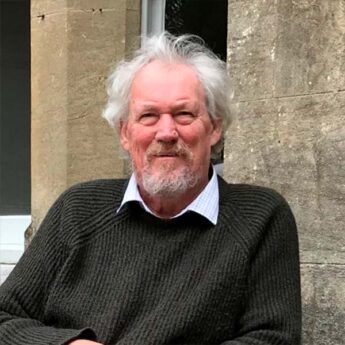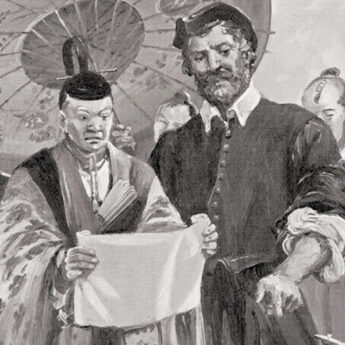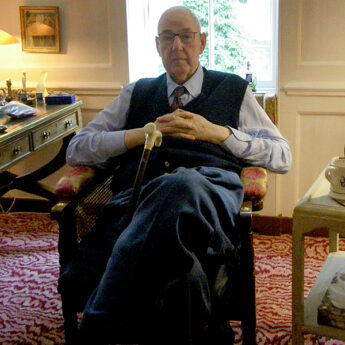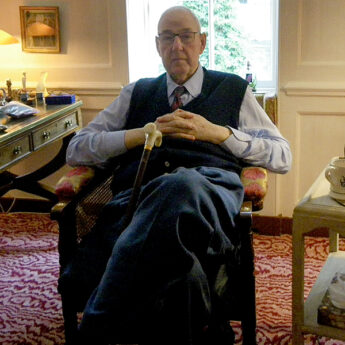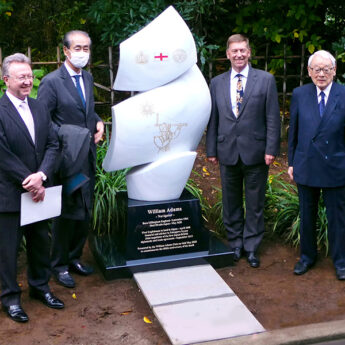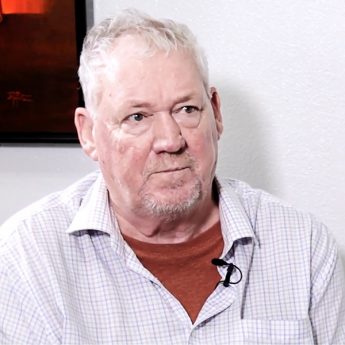This is the second in our series on the rich and varied history of the British Chamber of Commerce in Japan (BCCJ).
Each issue this year will celebrate specific chapters, milestones, sectors and people fundamental to the BCCJ during the 70 years since it was formed.
While today’s BCCJ is resolutely focused on the future and key modern issues—such as bilateral ties, business, innovation, diversity, equality, governance and culture—it equally values its remarkable achievements and fascinating heritage.
Since the middle of 2017, we have searched for records of the people and events behind the BCCJ. Unfortunately, we soon learnt that important official papers, which could have shed light on this subject, had mysteriously vanished from the BCCJ office several decades ago. We are still looking.
The untimely death in December 2017 of the BCCJ’s longest-serving executive director, Ian de Stains OBE, further set back this challenging project, as he had been set to play a key role in producing the series.
However, we resume with the second in a two-part introduction to the BCCJ written by de Stains and commissioned by former British Ambassador to Japan (1980–1984) Sir Hugh Cortazzi GCMG, for Britain & Japan: Biographical Portraits Volume X, which he compiled and edited. It was published in 2016 by Renaissance Books.
I would like to sincerely thank Sir Hugh and the Japan Society in London, which owns the copyright, for generously granting us permission to reproduce this revealing essay, and for their valuable advice and keen support in our project.
Greatest asset
In 1987, the BCCJ’s longest-serving employee and member, Operations Manager Sanae Samata, joined the BCCJ. She recalls: “There was no PC, so our executive director brought in his own machine from home so I could work on an internally produced directory of members”. Samata is certain about the chamber’s greatest strength today—the generosity of its members:
“I think the volunteer spirit of our members, especially the contribution by the executive committee (Excom), is incredible. I have learnt such a lot from their attitude to service in the community”.
The 1990s were years of great expansion. Under the editorial leadership of the executive director, the chamber produced a number of publications such as Japan Posting, Human Resources in Japan, Research and Development in Japan, Seihinka and Gaijin Scientist (also a commercial publication in Japanese translation). These were the result of such chamber initiatives as the Science and Technology Action Group (STAG) and the Small and Medium Business Initiative (SAMBI). At the time, the chamber also issued a journal, Insight, which was produced in-house
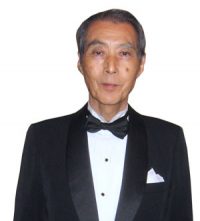
Sukeyoshi Yamamoto OBE,
the first Japanese member
of the Executive Committee
Export support
As president of the Board of Trade in the early 1990s, Michael Heseltine CH PC was determined to launch a major expansion of UK export promotion. In his department, the Department of Trade and Industry (DTI), Jane Owen headed the Exports to Japan Unit as successor to a series of former commercial diplomats at the British Embassy Tokyo.

Michael Heseltine CH PC, former president of the Board of Trade
In addition, and to assist with this, the DTI recruited business people who had worked in Japan. They were styled export promoters.
The chamber played a full and supportive role in the subsequent export promotion campaigns. The aim was not just to advertise the Japanese market to British exporters. It was also to help UK firms understand how engaging with Japan would make them more competitive, in terms of benchmarking themselves against the highest standards of technological development and customer service.
The British Industry Centre
Over time, the emphasis shifted from the general promotion of Japan in the UK to sector-specific initiatives, and to helping suitably qualified firms to invest in Japan.
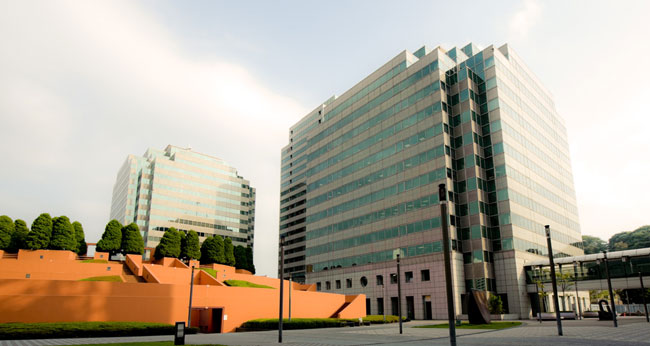
The British Industry Centre in Yokohama
A significant development was the establish–ment, in 1997, of the British Industry Centre (BIC) in Yokohama. This initiative was designed to encourage British firms to set up and do business in Japan, by helping to reduce set-up costs and potential difficulties.
The export promoter responsible for this was Mike Ingle MBE, then recently returned from four years in Japan with Sedgwick & Co Ltd. He was asked to look at the feasibility of an incubation centre in Japan that would enable firms to gain a foothold with the minimum of difficulty.
Ingle explains: “At the beginning of this feasibility study I spent much time assessing the demand by visiting British firms with a potential interest. In addition, I worked with the executive director of the BCCJ, the commercial department of our embassy in Tokyo and also the Japan External Trade Organization in London. I needed to find the most suitable location, estimated costs and sources of finance.
“I also needed to identify the support we would have from both countries long term. There proved to be a significant general interest in the idea. “The first question was where the BIC should be located. The BCCJ was very helpful in providing guidance and we narrowed the location down to Yokohama, having considered various locations around Tokyo to be too expensive.
“One very important question remained. Who would administer the centre? I considered a number of possibilities, but the obvious answer really was the BCCJ. However, I was very conscious of their limited resources.
“Despite his heavy workload, the executive director visited the UK several times to help me promote the BIC to companies, urging them to seek the valuable opportunities and help them understand the Japanese business culture, and particularly the real benefits of having a physical presence there. He was a key speaker at some of our seminars and discussions and I valued his support enormously”.
In January 1998, Prime Minister Tony Blair, the British Ambassador Sir David Wright, the mayor of Yokohama and the president of the chamber, Richard Neal OBE, formally opened the BIC in the Yokohama Business Park. Ingle commented: “The BIC attracted a huge amount of attention. Other countries wondered if they might emulate it. It was, without doubt a huge feather in the chamber’s cap”.
The centre ran successfully for several years and played an important role in helping a number of small and medium-sized enterprises from the UK to establish themselves in the Japanese market.

BCCJ publications
Business acumen
The year 2008 saw the chamber’s 60th anniversary— a significant milestone in Japanese society—and the occasion was marked by a gala evening, the British Business Awards (BBA), now an annual event that is arguably the high spot of the BCCJ’s busy events calendar.
The 2009 BBA was to become the cover story for another new initiative: the launch of a new BCCJ magazine. Insight had been retired as the chamber focused, through the 1990s, on building an online presence and a website that was an early version of a content management system. But in the mid-2000s a small startup firm, Custom Media, approached the chamber with an idea, as publisher and BCCJ Excom member Simon Farrell explains:

Simon Farrell, founding publisher of BCCJ ACUMEN
“It was a bare-bones issue, with a marble BBA trophy decorating the cover. During the launch party at the British Embassy Tokyo, one joker loudly said, to much laughter, that the trophy on the cover resembled a Dubai skyscraper. We were crushed with embarrassment.
“The magazine has survived an earthquake and economic crises, but has since grown to a monthly 52-plus pages. BCCJ ACUMEN has become more of a lifestyle, culture and arts magazine for the British community (and Anglophiles) in Japan than a simple business publication. It is now also distributed with the Financial Times and at UK and Japanese airports.
“We are indeed very grateful to the BCCJ for taking a risk with us and we look forward to many more years of publishing BCCJ ACUMEN”.
Strong network
The earthquake to which Farrell refers was of course that of 11 March 2011. It was followed by a devastating tsunami and the nuclear meltdown: a triple disaster that left vast areas of the Tohoku region in ruins. While this was a prompt for many in the foreign community to leave Japan, the BCCJ, together with the British Embassy Tokyo, quickly acted to get out as much timely information as possible to members.

Lori Henderson MBE, executive director of the BCCJ, in 2011
“From the day following the disasters, one of our long-term friends, a non-profit organisation (NPO) leader in the field, was able to feed us information on what local people and communities really needed—water, sanitary products and so on. Some of our member firms had already written huge cheques to support international NPO activities (e.g., Red Cross disaster relief projects) in the area.
“Our strength came not from our financial reserves (we are also an NPO), but from our network—in Tohoku, Tokyo, throughout Japan and in the UK. People wanted to help.
“We were able to work swiftly to directly connect local communities in Tohoku with firms, organisations and individuals who could help deliver products and people to areas that needed them most. These were often areas that were not yet receiving media attention or ‘formal’ support from the Japanese government.
“Immediately following the emergency relief phase of the March 2011 disasters, we went on to establish the Back to Business (B2B) Initiative for Tohoku. From as early as May of that year, local people were telling us that they were tired of saying thank you to volunteers and supporters, and simply wanted to feel a sense of normality returning to their daily lives”.
Appetite to learn
In October 2014, the BCCJ signed an agreement with the British government to help UK firms secure opportunities related to the 2019 Rugby World Cup and the Tokyo 2020 Olympic and Paralympic Games.
Under the agreement, the chamber joined a global network of British business groups around the world that are working in tandem with the government to support British exporters—those who are already operating in the Japan market and looking to expand, and those seeking to enter.
According to Henderson: “The initiative, which lasted for two years, helped us deepen relationships with Japanese organisations and firms. The October 2014 agreement was witnessed by invited guests from the Japan Association of Corporate Executives (Keizai Doyukai)—one of Japan’s leading national business associations.
“Subsequently, Japanese participation in BCCJ events has increased (from 18% to 35% year-on-year growth [at the time the article appeared in Sir Hugh’s book, Britain & Japan.]) and our members are pleased to have regular chances to connect directly with C-suite representatives from Japanese multinational corporations. Current BCCJ President David Bickle calls it ‘enriching our platform’”.
Henderson believes there is clearly an appetite for Japanese and British businesses to work in tandem and exchange best practices on how to host three of the world’s largest sporting events in quick succession. On the back of the London 2012 Olympics and Paralympics and 2015 Rugby World Cup, the BCCJ remains in the thick of the action, arranging events, workshops and “hackathons” in Tokyo, bringing together national and local governments and firms from both countries.

